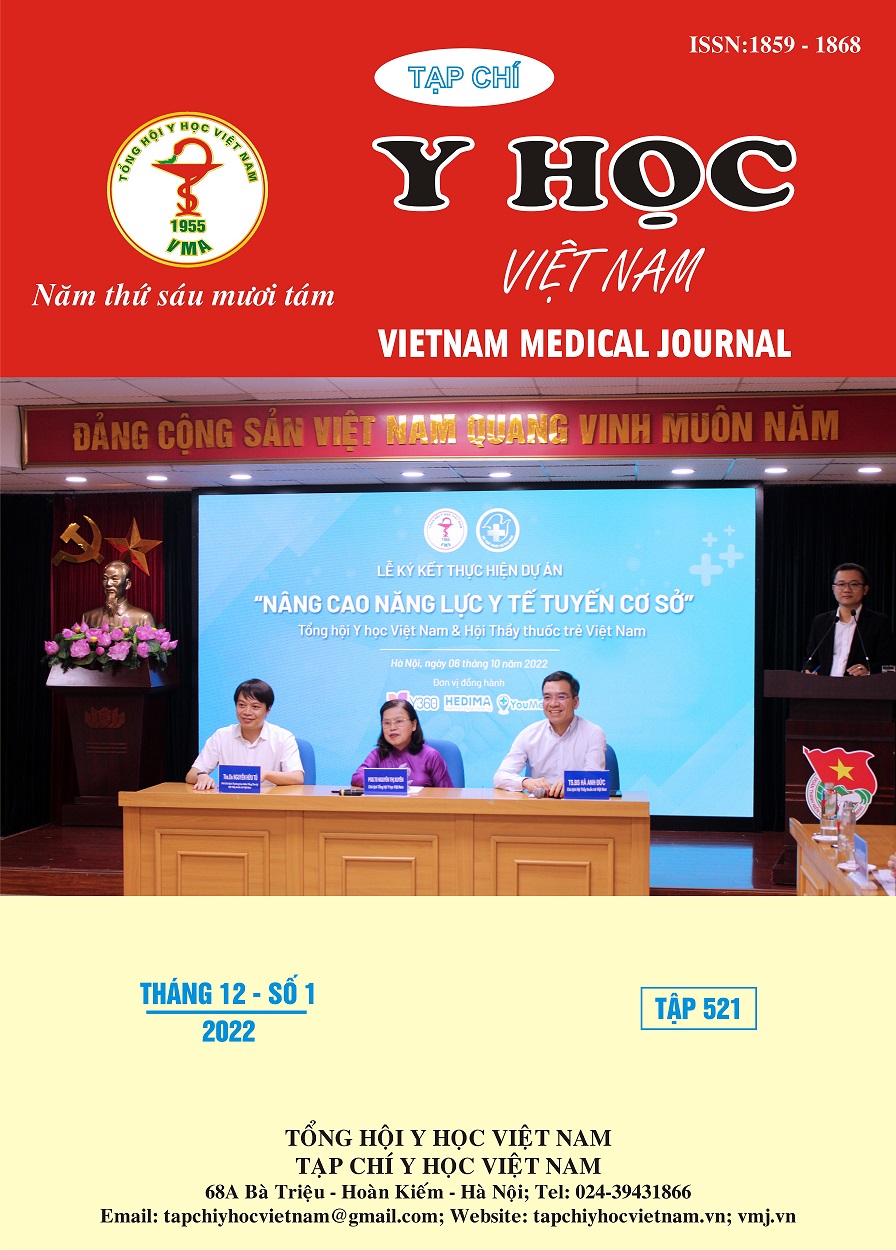BUILDING PROCESS FOR DETECTING CANDIDA SPP. BY MULTIPLEX PCR METHODS
Main Article Content
Abstract
Background: According to the Centers for Disease Control and Prevention (CDC) and the US National Health Care Safety Network, Candida spp. ranked 5th among nosocomial pathogens and 4th among blood-borne pathogens. Currently, this shifting trend in Vietnam is also occurring with the highest infection rates in 04 species of Candida albicans, Candida glabrata, Candida parapsilosis, and Candida tropicalis. However, the traditional methods of detecting Candida species, although easy to implement, have many disadvantages: dependent on objective factors, and are time-consuming, leading to not quick and timely treatment indications. The Molecular logy diagnostic methods have many advantages in detecting and identifying pathogens. Objectives: This study was carried out with two objectives: (1) Determine and optimize multiplex PCR conditions to detect 04 fungi C. albicans, C. glabrata, C. tropicalis, and C. parapsilosis. (2) Develop a process to simultaneously detect 04 species of C. albicans, C. glabrata, C. tropicalis, and C. parapsilosis by multiplex PCR method. Method: Candida spp. was admitted to the University of Medicine and Pharmacy Hospital in Ho Chi Minh City. Ho Chi Minh City, Le Van Thinh Hospital, and Military Hospital 175 from October 2020 to May 2021. The fungus was detected by the following methods: (1) germplasm test, (2) isolation on CHROMagar Candida medium, (3) optimization of the Candida spp detection procedure by Multiplex PCR technique and using the optimal procedure in detecting Candida spp. from patient samples and (4) sequenced 5 amplification products to check for specificity. Then, compare and interpret the results of detecting Candida spp. by 3 methods: germ tube test, CHROMagar Candida, and Multiplex PCR. Results: 40 patient samples were detected by 3 methods: Germ tube testing: detecting 13 species of C. albicans and 27 species of C. non-albicans, culture of CHROMagar Candida: detecting 18 species of C. albicans, 5 species C. tropicalis, 3 species of C. glabrata and 14 species of C. non-albicans. With multiplex PCR: detected 18 species of C. albicans, 7 species of C. tropicalis, 8 species of C. glabrata, 6 species of C. parapsilosis and 1 unidentified species. Multiplex PCR components for optimal detection of 4 Candida species in 1 effendop tube: PCR buffer 10 X 2.2 µl; MgSO4 25 mM 0.6 µl; Taq DNA polymerase 5 UI/µl 0.3 µl; dNTP 10 mM 0.5 µl; primer Falb 5 pmol 0.3 µl; Ralb 5 pmol 0.5 µl; Ftro 5 pmol 0.3 µl; Fpara 5 pmol 0.6 µl; Rpara 5 pmol 0.6 µl; Fgla 5 pmol 0.3 µl, Rgla 5 pmol 0.3 µl; DNA extract 1 µl; enough demineralized water 25 µl. Optimized PCR program: initial denaturation period 95oC 5 min (1 cycle), stage 2 (40 cycles): denaturation 95oC 30 s, primer 59 oC 30 s, primer extension 72oC 30 seconds; final elongation n period 72°C 8 min (1 cycle).
Article Details
Keywords
Candida spp.; Multiplex PCR
References
2. Neppelenbroek, K. H., et al, (2014), "Identification of Candida species in the clinical laboratory: a review of conventional, commercial, and molecular techniques", Oral Dis, 20 (4), pp. 329-344.
3. Pappas, P. G., et al, (2018), "Invasive Candidiasis", Nat Rev Dis Primers 4pp. 126-180.
4. Sardi, J. C. O., al. e, (2013), "Candida species: current epidemiology, pathogenicity, biofilm formation, natural antifungal products and new therapeutic options", J Med Microbiol, 6 (1), pp. 10-24.
5. Singh A., Goering RV., Simjee S, (2006), "Application of Molecular Techniques to the Study of Hospital Infection", Clinical Microbiology Reviews, 19 (3), pp. 512-530.
6. Vingataramin, Laurie Frost, Eric H, (2015), "A single protocol for extraction of gDNA from bacteria and yeast", Biotechniques, 58 (3), pp. 120-125.
7. Phùng Nguyễn Thế Nguyên, (2015), "Đặc điểm bệnh nhi nhiễm nấm tại Khoa Hồi sức tích cực- Chống độc Bệnh viện Nhi Đồng 1", Y học TP Hồ Chí Minh, 19 pp. 22-28.
8. Trương Thiên Phú, (2018), "Phân bố các tác nhân gây nhiễm nấm máu và tình hình kháng thuốc kháng nấm tại Bệnh viện Chợ Rẩy năm 2017", Y học TP Hồ Chí Minh, 22 pp. 149-154.


